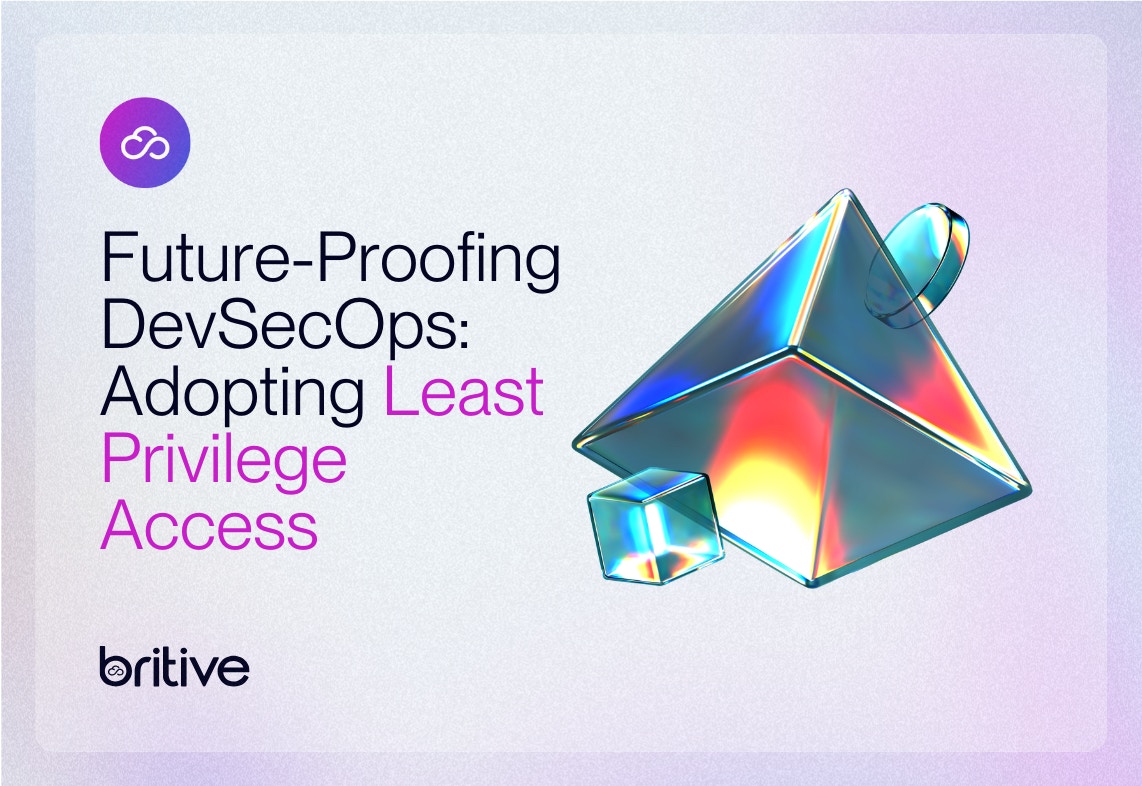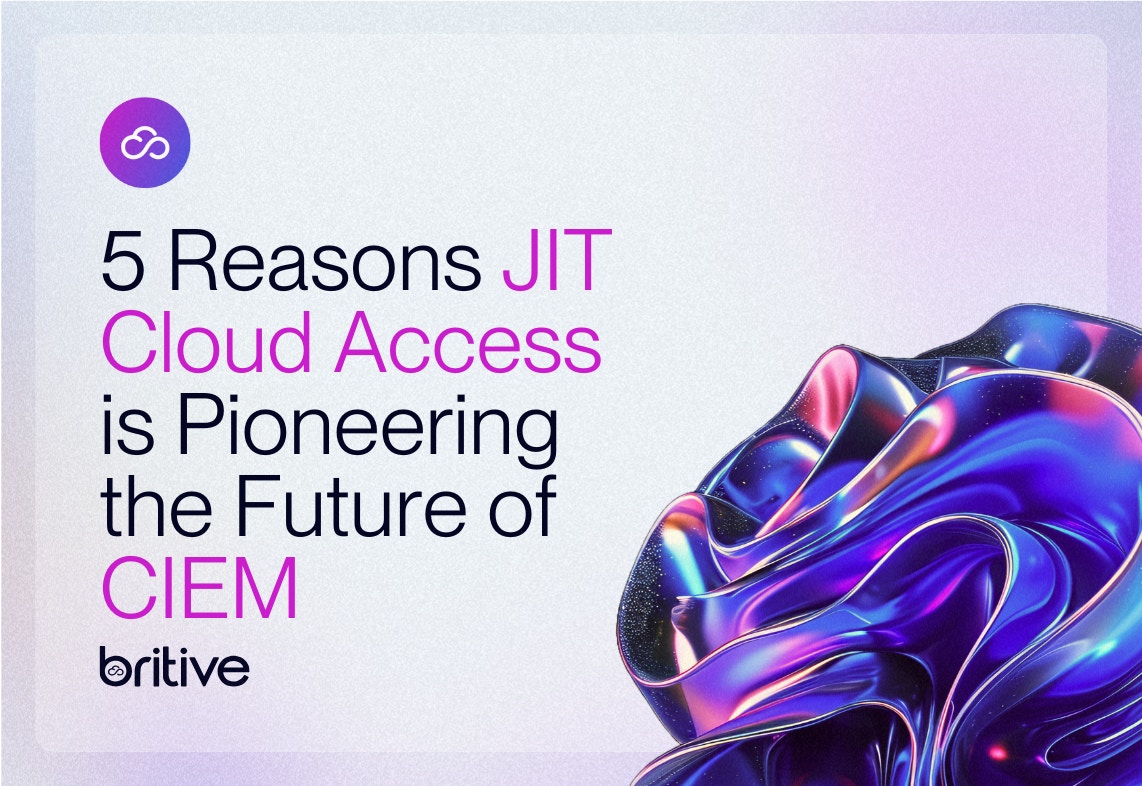


Back to resources
Ephemeral Cloud Access: Unlocking Seamlessly Integrated Innovations in Multi-Cloud IAM
August 2023 / 5 min. read /

In the present landscape of cloud operations, businesses are expanding their digital footprint to scale across multiple cloud platforms and the need for efficient identity and access management (IAM) is becoming more critical than ever. Modern multi-cloud IAM requires groundbreaking solutions to revolutionize the way organizations manage access to their cloud resources. At the forefront of this transformation is the concept of ephemeral cloud access, which offers time-bound access to resources only as needed, eliminating static privileges and significantly reducing the risk of insider threats and security breaches.
The Evolution of IAM: From Static Privileges to Ephemeral Access
Traditional IAM practices relied heavily on the assignment of static privileges. Users were granted access to specific resources based on predefined roles and permissions, regardless of the actual usage patterns. This approach, while convenient, posed a considerable security risk. As cloud-targeted cyber threats grew more sophisticated, static privileges provided a handy bullseye for attackers and exposed organizations to potential misuse of elevated privileges by their internal teams.
As multi-cloud environments become especially ubiquitous for enterprise organizations, the limitations of static IAM have become even more apparent. Managing access across various cloud platforms and services became a complex puzzle that traditional access models struggled to solve. Ephemeral cloud access has emerged as a solution designed to address these challenges.
The Power of Ephemeral Cloud Access
Ephemeral cloud access, often referred to as Just-in-Time (JIT) access, is the cornerstone of an innovative multi-cloud IAM strategy that takes into account the need for automated processes. It operates on the principle that users should have access to resources for the shortest time necessary to complete their tasks. This approach stands in stark contrast to the static privilege model, where users retain access even when it's unnecessary and potentially hazardous.
The advantages of ephemeral cloud access are manifold:
- Reduced Attack Surface
Ephemeral access significantly reduces the attack surface by minimizing the window of opportunity for potential attackers. With static privileges, attackers could exploit long-standing access rights to infiltrate systems or exfiltrate data. Ephemeral access ensures that the window for such activities is dramatically shortened, making it substantially harder for cybercriminals to carry out attacks. - Mitigated Insider Threats
Insider threats, whether malicious or unintentional, have plagued organizations from the time of cloud computing’s conception. Ephemeral access acts as a robust defense against such threats by limiting the exposure of sensitive information. The risk of unauthorized data access, leakage, or intentional misuse is significantly reduced when users have access only when they need it. - Enhanced Compliance
For businesses operating in regulated industries such as healthcare or finance, adhering to strict compliance standards is a non-negotiable practice. Ephemeral cloud access offers a built-in audit trail, providing a record of who accessed what and when. This audit-friendly approach streamlines compliance reporting and ensures that organizations meet the requirements set forth internally and by regulatory bodies. - Dynamic Scalability
One of the defining characteristics of cloud environments is their scalability. Ephemeral cloud access seamlessly aligns with this scalability, automatically adjusting access privileges based on real-time demands. As resources scale up or down, access follows suit, eliminating the risk of leaving unnecessary privileges behind. The strongest version of this scalability is provided by a JIT access solution that can integrate easily across major cloud service providers so that organizations can adopt their IAM strategy into new cloud environments as they expand their digital footprint. - Adaptive Privilege Management
Ephemeral access empowers administrators with a dynamic approach to privilege management. Traditional static privileges often require manual adjustments, leading to administrative overhead and potential oversights. Ephemeral access, on the other hand, adapts in real-time, ensuring that users have precisely the privileges they need, precisely when they need them.
Britive: Leading the Charge Towards Least-Privilege Cloud Security
As organizations embrace the critical need for ephemeral cloud access within their multi-cloud IAM strategy, solutions like Britive are at the forefront of innovation. Britive offers a comprehensive platform that specializes in providing just-in-time access across multi-cloud environments that enables organizations to adopt least-privilege security postures with ease. With its developer-friendly design and programmatic automation that maps onto existing DevOps workflows, Britive allows organizations to configure permissioning practices that guarantee users and applications access only the resources essential for their current tasks.
Britive's platform integrates with all major cloud providers, offering centralized access management while interacting seamlessly with the unique characteristics of each platform. This approach streamlines IAM processes, reducing administrative complexity and enhancing overall security.
Conclusion
In an era where multi-cloud operations reign and the need for modern multi-cloud IAM is ever-present, the security and efficiency of ephemeral cloud access are paramount. With its emphasis on just-in-time provisioning and subsequent operational enablement, multi-cloud JIT solutions are emerging as a pivotal advancement in the realm of robust cloud access management. By embracing this innovative approach, organizations can dramatically reduce the risk of insider threats, security breaches, and compliance challenges while streamlining their administrative workflows. With cutting-edge solutions like Britive leading the way, the future of access management is a secure, scalable, and efficient landscape that empowers businesses to harness the full potential of the cloud while safeguarding their assets.

